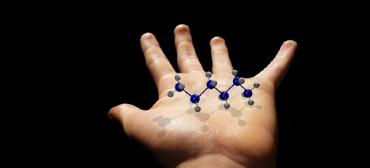Radiation Therapy for Breast Cancer Treatment
What is radiation therapy?
Radiation therapy is a process that precisely sends high levels of radiation directly to the cancer cells. Radiation done after surgery can kill cancer cells that may not be seen during surgery. Radiation may also be done:
-
Prior to surgery to shrink the tumor.
-
In combination with chemotherapy.
-
As a palliative treatment (therapy that relieves symptoms, such as pain, but does not alter the course of the disease).
There are various ways to deliver radiation therapy. However, external radiation is the usual type that is used for treatment of breast cancer. Consider the following:
-
External radiation (external beam therapy) - a treatment that precisely sends high levels of radiation directly to the cancer cells. The machine is controlled by the radiation therapist. Since radiation is used to kill cancer cells and to shrink tumors, special shields may be used to protect the tissue surrounding the treatment area. Radiation treatments are painless and usually last a few minutes.
-
Internal radiation (brachytherapy, implant radiation) - radiation is given inside the body as close to the cancer as possible. Substances that produce radiation, called radioisotopes, may be implanted directly into the breast tumor, or injected through a tube placed near the tumor. Internal radiation involves giving a higher dose of radiation in a shorter time span than with external radiation.
A radiation oncologist will plan your radiation treatment based on your medical history, a physical examination, pathology and laboratory reports, and previous mammograms and surgeries. Your chest area will be marked with ink that must stay on your skin for the course of your treatments. These markings assure that the radiation will be given to the exact area requiring treatment.
Radiation treatment is like having a standard x-ray, but the radiation is stronger. The treatment lasts only a few minutes and is painless. A typical course of radiation treatment of this type is treatment for five days per week over a six-week period. If chemotherapy is also to be given, radiation treatment may not be given until after chemotherapy has been completed.
Side effects of radiation therapy:
As each person's individual medical profile and diagnosis is different, so is his/her reaction to treatment. Side effects may be severe, mild, or absent. Be sure to discuss with your cancer care team any/all possible side effects of treatment before the treatment begins. Possible side effects that may occur during or following radiation for breast cancer include:
-
Fatigue (especially during the later weeks of treatment)
-
Skin problems in the treated area, including soreness, itching, peeling, and/or redness. Toward the end of treatment, the skin may become moist and weepy.
-
Decreased sensation in the breast tissue or under the arm
In most cases, the effects of radiation on the skin are temporary and the skin involved in the treated area will heal upon completion of treatment. However, more long-term skin effects that may be seen in the treated area include:
-
Darkening of the skin
-
Increased size of skin pores
-
Telangiectasias - reddened areas caused by dilated blood vessels
A radiation oncologist carefully monitors the intensity and the length of each radiation treatment, and the area that is being treated. You will also have regular physical examinations and blood work during the course of your treatments.
Related Questions
Metastatic breast cancer
- 3694 Days ago
- Breast Cancer - Cancer
Metastatic breast cancer
- 3694 Days ago
- Breast Cancer - Cancer





















